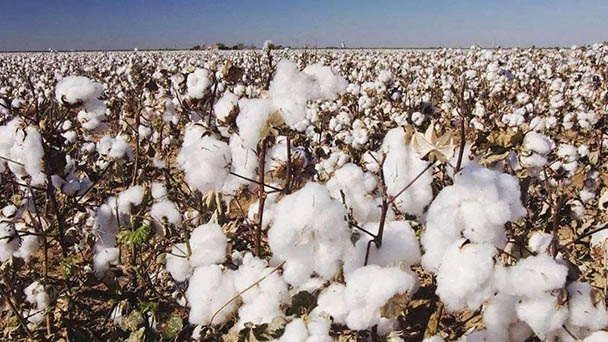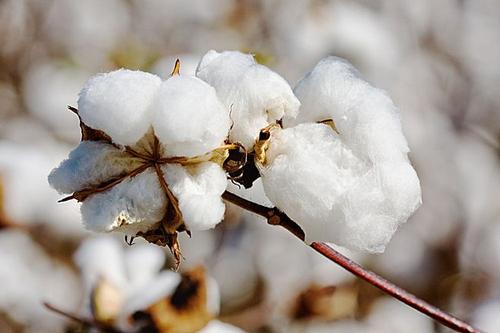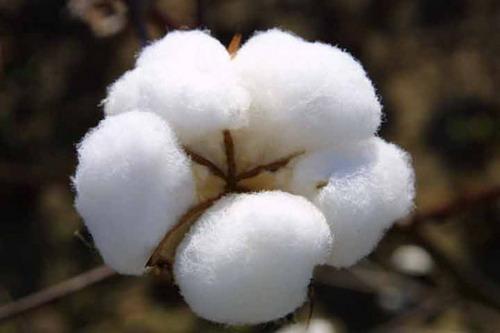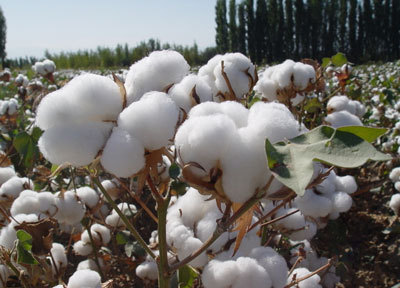Gossypium spp profile
Written by Maggie
Nov 17 2020

Gossypium spp is native to the subtropical zone. The plant is shrub-like and can grow up to 6 meters high in tropical areas, usually 1 to 2 meters.
Gossypium spp picture

Morphological characteristics of Gossypium spp
Gossypium spp is an annual herb, 0.6-1.5 meters high, with sparsely long hairs, broad-ovate leaves, 5-12 cm in diameter, approximately equal or wider in length and width. It is base heart-shaped or heart-shaped truncated, often 3 Shallow lobed, rarely 5-lobed, middle lobes often deeply lobed to half of the leaf, lobes broadly triangular-ovate, apex acuminate, broad base, nearly glabrous on top, coarse hairs along veins, sparsely pilose below. The petiole is 3-14 cm long, sparsely pilose. The stipules are ovate falciform, 5-8 mm long, early fall.
Flower is solitary in leaf axils. Pedicel is usually slightly shorter than petiole; bracteoles 3, separate, base heart-shaped, with 1 gland, margin with 7-9 teeth, teeth up to 4 cm, width about 2.5 cm, covered long bristles and cilia; calyx cup-shaped, lobes 5, triangular, ciliate. Flowers are white or pale yellow, later turning pale red or purple, 2.5-3 cm long; stamen column length 1.2 cm.
Capsules are ovoid, 3.5-5 cm long, beaked, 3-4 locules; seeds are separated, ovoid, with white long cotton hairs and off-white short cotton hairs that are not easily stripped. Flowering period is in summer and autumn.
Gossypium spp distribution range
Gossypium spp has been widely cultivated in various cotton-producing regions across the country, and gossypium spp is native to America and Mexico. It was introduced into my country for cultivation at the end of the 19th century.
Producing areas in the world
China, the United States, India, Uzbekistan, Egypt, etc. Among them, China has the largest unit output, and Uzbekistan is known as the "Platinum Country".
Producing areas in China
Jianghuai Plain, Jianghan Plain, Southern Xinjiang Cotton Region, North China Plain, Northwest Shandong, North Henan Plain, and Coastal Plain along the Lower Yangtze River.

Gossypium spp growth environment
Lighting conditions
Xinjiang Gossypium spp are mostly early-middle-maturing, early-maturing and extra-early-maturing varieties, which are not sensitive to light length. It is a light-loving crop, suitable for growing under sufficient light conditions. Gossypium spp light compensation point and light saturation point are both high. According to measurement, the light compensation point of Gossypium spp single leaf is 750~1000lx, and the light saturation point is 70~80 thousand lx. In general, the suitable range of Gossypium spp leaves for light intensity is 8000~70,000 lx. In this range, the photosynthetic intensity increases with the increase of light intensity.
Moisture condition
Moisture is an important component of Gossypium spp. Gossypium spp needs to absorb water from the soil to grow. The physiological water requirements for each growth stage of Gossypium spp are as follows: from sowing to emergence, the soil water content of 0-20 cm should account for 70-80% of the field water holding capacity; in the seedling stage, the water content of 0-40 cm soil layer should account for the field water holding capacity. 60-70% of the soil is suitable; in the early bud stage, the soil moisture content of 0-60 cm should account for 65-75% of the field water holding capacity; after the blooming stage, the water content of the 0-80 cm soil layer accounted for the field water holding capacity. 70~80% is appropriate, not less than 60~65%; during the flocculation period, the relative soil moisture content should be maintained at 55~70%. According to relevant research, about 2/3 of the water in cotton fields is consumed by transpiration during the entire growth period, and 1/3 is consumed by land evaporation.
Soil condition
The growth and development of Gossypium spp requires water and nutrients, which are mainly obtained from the soil through the root system. The required temperature and air are partly taken from the soil, and it requires the mechanical support of the soil to grow. The physical, chemical and biological properties of the cotton field soil largely restrict the yield and quality of Gossypium spp. Soil moisture, nutrients, temperature, air, salt content, texture, etc. all have a great influence on the growth of Gossypium spp.

Latest Updated
- Benefits of Bugleweed - 7 Science-backed Health Benefits
- Bugleweed Dangers & Side Effects - Is It Poisonous?
- How to Plant Evergreen Trees - What You Should Know
- When to Plant Evergreens - Grow Guide for Evergreen Trees
- 12 Wonderful Evergreen Shrubs for Your Garden
- 12 Popular Evergreen Plants with Pictures for Beginners
- When And How To Prune A Lilac Bush Like a Pro
- How to Grow & Care for Lilac Vine (Hardenbergia Violacea)
- Japanese Lilac Tree (Syringa Reticulata) Care & Propagation Guide
- Shumard Oak Pros and Cons - What to Know
Popular Articles
- Winter maintenance of Antirrhinum Majus
- How to Grow Terminalia Mantaly Tree
- How to Grow and Care for Crossostephium Chinense
- How to grow Antirrhinum Majus in spring
- Peristeria Elata (Dove Orchid) Profile: Info & Care Guide
- Underwatered Snake Plant (Sansevieria Trifasciata) - Signs And How To Fix
- How to Care for Brazilian Jasmine Plant (Mandevilla Sanderi)
- How to Grow & Care for Graptopetalum Purple Delight in Summer
- Rosa Chinensis (China Rose): Plant Growing & Care Tips
- How to Care for Baby Sun Rose (Aptenia Cordifolia)